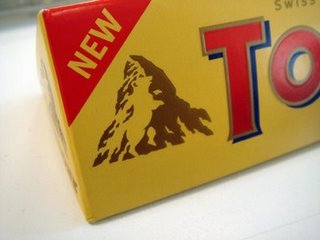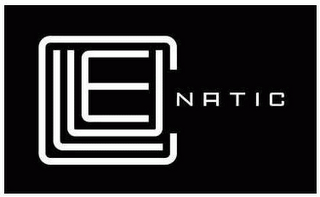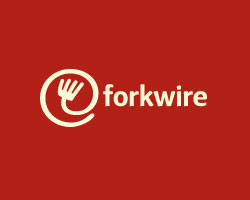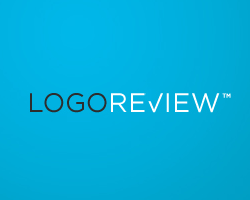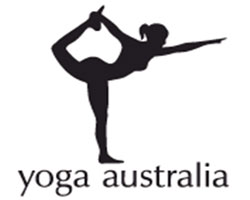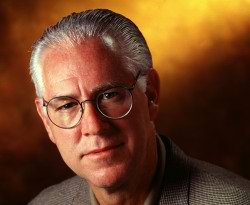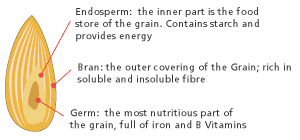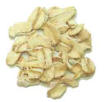Are You A Walking Time Bomb?
High Blood Pressure, The Silent Killer:
Tom Venuto Interviews Frank Mangano About The Best Natural Ways To Lower Your Blood Pressure, Reduce Your Waistline And Take Back Your Health, Part One
| 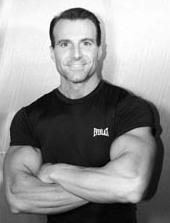 Tom Venuto,
Weight Loss Expert
Author & Success Coach | 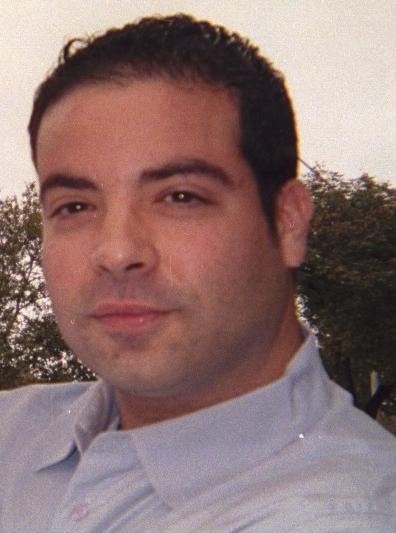 Frank Mangano,
Blood Pressure Expert
Author & Researcher |
Tom Venuto: Today my guest is Frank Mangano, who is the author of The Silent Killer Exposed, which is the best selling e-book on the net on the subject of natural ways to reduce your blood pressure, and that website is: www.TheSilentKillerExposed.com
Now this is a subject I’m passionate about for a couple reasons. First, because the issue goes hand in hand with the obesity issue, which is my primary area of research and expertise and second, because I’m not only an advocate of losing fat and developing your body without drugs, but also an advocate of improving your health in natural ways without drugs, whenever that is possible.
Your health is absolutely your greatest wealth because everything else in your life is meaningless if you don’t have your health. You have to put your own health at the very top of your life priority list. You can’t spend quality time with your family or advance your career, or enjoy anything else in life if you’re laid up in a hospital bed… or worse.
As a natural bodybuilder and fat loss coach, I’m interested not only in being muscular and having six pack abs and so on, but also feeling great and enjoying great health. What good is it to look great on the outside when you’re a mess on the inside, right? So when I say the word natural, I’m referring not only to saying no to steroids and weight loss drugs, but also staying away from other drugs, if those drugs are being used as a means of treating symptoms and not addressing causes, and if there’s an alternative.
First off, before we get into talking about this problem of high blood pressure, how it relates to the obesity problem and what are some natural approaches to fixing it let, me just back up for a minute and explain how I found out about Frank.
For many years, I was the manager of a chain of health clubs here in the New Jersey and New York Metropolitan area, and I met Frank because coincidentally, he was a member of one of our health clubs located in Brooklyn. At the time, I had no idea he was a natural health book author and expert on blood pressure, he was just one of the guys at the gym. It was only later that he found my
Burn The Fat website by accident and mentioned that he also had a website dedicated to natural approaches to better health, and that’s how we originally connected.
So Frank, thank you for this interview and why don’t we get started by you telling us about your background. Specifically, what made you take an interest in researching this subject – was it an academic interest, or was it personal, like did you or a family member have high blood pressure, or was it something else?
Frank Mangano: Hey Tom, it’s a pleasure to do this interview with you. Before I answer that, I just want to add that I couldn’t agree more with what you said about “Health is wealth.” The statement is so important and so true.
I also want to point out something before we get started. What we're going to talk about here is purely intended as reference material and as a way to open the door to a discussion between patients and their doctors about alternative ways to manage blood pressure. It's my honest opinion that if someone with hypertension wants to lower their blood pressure, it can be done in a natural way and without the same side effects you often get with drugs. The advice I give isn't intended as medical or professional advice but only a way to give people the tools they need to make informed decisions about their lifestyles and their health. The information we talk about tonight should not be used as a substitute for any treatment that has been prescribed or recommended by a doctor. If someone is currently taking medication for high blood pressure then they should continue to do so unless they are advised by their doctor to do otherwise. The same is true about the information in my book. I am not a healthcare professional. If you've been told by a healthcare professional that you have high blood pressure, or if you've taken a blood pressure reading at a pharmacy or at home that is within the range of what's considered high blood pressure, then it's imperative that you get medical attention and the advice of your healthcare provider. You should never begin a diet or exercise program without first consulting with a qualified healthcare professional.
As for my research, Tom, it all started when my mom was diagnosed with high cholesterol. She was afraid of taking statin drugs, and with good reason. She came to me for help and asked what I thought she could do to avoid taking prescription medications. And so my research began. But I didn’t go right out looking for a solution, I first wanted to know everything there was to know about high cholesterol, so I started reading and studying all the information I could find on the topic. Once I understood it completely, my research expanded into what specifically could be done to lower it naturally.
I took what I learned and created a plan for my mom based strictly on hard science. The end result is that her LDL – which is the bad cholesterol - dropped almost 40 points. Because of this she was able to avoid taking prescription drugs. This was very exciting for me – obviously – because this was my mom, but also because this led to my first book which is called, “The 60 Day Prescription Free Cholesterol Cure.”
According to my research, I discovered that many times, although not always, people who had high cholesterol also had “hypertension”, better known as high blood pressure. At that point I wanted to be sure my mom wouldn’t develop high blood pressure and so I started researching again.
Ever since I released my first book, I’ve been on a mission to find solutions for people who want to improve the quality of their lives, without chemical drugs. Often times, doctors will write a prescription for some drug that the profit-minded pharmaceutical companies are pushing when the drug isn’t even necessary! Whatever happened to good nutrition and exercise?
Tom Venuto: Good nutrition and exercise - AMEN to that! When was the last time your doctor took out that prescription pad and wrote: weight lifting 3 times a week, and do cardio or go for a walk every day for 30 minutes? Okay, would you give a real quick definition of what high blood pressure is and how someone would know if they have it?
Frank Mangano: Sure. High blood pressure is simply the amount of force the blood puts on your arteries as it passes through them. Your blood pressure doesn’t stay steady throughout the day - it rises and falls. When your blood pressure stays elevated over time, you are said to have high blood pressure. Here’s the disturbing part, Tom. Although some people may get headaches, dizziness, or blurred vision, high blood pressure often has no signs or symptoms. That’s why it’s also known as “The Silent Killer.”
Tom Venuto: So what is the best method for detection, aren’t there any outward warning signs or is the only way to check in with your doctor at regular intervals and or get your blood pressure taken regularly?
Frank Mangano: The surefire way to find out is to get tested. Your doctor can easily tell if your blood pressure is high by using what’s known as a sphygmomanometer, which is the instrument for measuring blood pressure in the arteries. This device consists of a pressure gauge and a rubber cuff that wraps around your upper arm and inflates to constrict the arteries.
Tom Venuto: Is it a good idea to test your own blood pressure at home and if so is there any special equipment you recommend?
Frank Mangano: Home testing is a very good idea, especially if you are concerned that you might have high blood pressure or if you have a family history of it. I highly recommend home testing. Although the digital (wrist cuff) blood pressure monitors are the easiest to use, I recommend using a manual blood pressure monitor for home testing. The manual monitors are similar to those that your doctor may use and usually they are more accurate than the digital (wrist cuff) monitors. A manual monitor, also known as a sphygmomanometer, will include an arm cuff, a squeeze bulb, stethoscope and a gauge to measure the pressure.
Tom Venuto: Ok, let me ask you another question. I see a lot of attention in the media about the obesity problem, quite a bit about diabetes, but not nearly as much about high blood pressure. Is it not that serious in comparison? Just how bad and how widespread is the high blood pressure problem?
Frank Mangano: Tom, it’s very serious. I hope you’re sitting down because what I’m about to tell you is going to shock you. The fact is that nearly one billion – yes, I said 1 billion - people worldwide have high blood pressure! A recent study predicted that this number will increase to 1.56 billion people by 2025. Those are staggering numbers, to say the least.
Tom Venuto: Scary, actually, that puts it right up there with obesity – 1 billion people. I guess one reason that obesity gets more headlines and even reality TV shows – and high blood pressure doesn’t, is because with obesity, you wear your problem and it’s a deeply emotional problem, whereas high blood pressure is not a cosmetic problem – like you say in the title of your book – it’s silent, but it’s still a killer. That probably makes it even more dangerous. If someone has high blood pressure and they don’t do anything about it what are the potential consequences?
Frank Mangano: Left untreated, high blood pressure will increase the risk of kidney damage, eye damage, hardening of the arteries (atherosclerosis or arteriosclerosis), heart attack, stroke, and other cardiovascular diseases. The cause of 3 out of 5 cases of heart failure in women is high blood pressure.
Tom Venuto: Let’s talk about causes. I think one of the huge mistakes people make in their journeys to lose weight and to become healthier is that they see symptoms and then they only take steps to treat the symptoms, without addressing the causes. What causes high blood pressure?
Frank Mangano: Well Tom, high blood pressure doesn’t discriminate and it can happen to anyone at any age. Since several factors and conditions play a role, it’s difficult to identify a specific cause. The healthcare profession doesn’t claim to know the cause of high blood pressure, but they do know that certain factors play a contributing role in its development.
Tom Venuto: Okay, so what are some of the factors that would give us some clue about whether you’re at risk and just how much risk?
Frank Mangano: There are a lot of factors that that contribute to high blood pressure including but not limited to smoking, lack of physical activity, obesity, high sodium intake, high cholesterol, excessive consumption of alcoholic beverages and of course, heredity. Diabetes patients are also at greater risk for developing high blood pressure and other cardiovascular diseases. Also, African-Americans seem to be at a greater risk of developing high blood pressure at an early age.
Tom Venuto: How much of this is genetics? If you have the predisposition are you just – to put it bluntly – basically are you screwed?
Frank Mangano: Your family history plays a role, but there are many things you can do to prevent or reduce high blood pressure even if you have genes that might make you more likely to have it.
Tom Venuto: I read something recently that you could say is pretty depressing and it came straight from the National Heart, Lung and Blood Pressure Institute (NHLBPI), and let me read this word for word, it said, “Once high blood pressure develops, it usually lasts a lifetime.” Well, the reason I say that’s depressing is because from my studies on the mind and psychology I know that when someone believes their problem is permanent, they tend to feel hopeless and then act helpless.
I’ve been working in the weight loss business my entire life and I’ve seen so many overweight men and women with high blood pressure lose weight, and then watch their blood pressure come down and it stayed down as long as they maintained a healthy weight. So why would the NHLBPI say something like this? What’s your take on this? Can high blood pressure be permanently cured or only controlled and what does the word “controlled” mean anyways?
Frank Mangano: What the NHLBPI is implying is that blood pressure is usually something that, if you are treating it only with medication, you’re likely to be on medication for a lifetime. That’s not to say you must be on medication. If people work to maintain a healthy weight, they can significantly lower their blood pressure and often go off the medication. This is why early monitoring and detection is important. You can control many of the risk factors before your blood pressure gets to dangerously high levels. Blood pressure itself is not a disease that needs to be cured, but high blood pressure is reaching epidemic proportions. We need the right amount of pressure to circulate the blood throughout the body. It does, however, need to be controlled so that blood pressure that is too low doesn’t deprive the body of oxygen and nutrients and blood pressure that is too high doesn’t strain the heart and blood vessels.
Tom Venuto: What is the actual relationship between high blood pressure and cardiovascular disease? Is high blood pressure literally the direct cause of strokes or heart attacks?
Frank Mangano: There’s a strong link between the two. The extra work the heart must do to push the blood through the body will eventually take its toll on the heart and arteries. High blood pressure creates a buildup in the arteries and therefore damages the arteries. As a result this greatly increases the risk for cardiovascular disease.
Tom Venuto: What’s the relationship between age and high blood pressure? Should we automatically assume that our blood pressure is going to go up as we age?
Frank Mangano: Age is a major contributor, but getting high blood pressure is NOT considered a normal, healthy part of aging. It may just be the result of a diet lacking in essential nutrients and/or a sedentary lifestyle.
Tom Venuto: I agree. I co-authored a book on healthy aging called Fit Over 40, and I have a lot of interest in this topic. People seem to think that everything automatically goes downhill after age 40, but muscle loss and gain in body fat that comes with age actually isn’t so much a result of age after all. It’s the same thing you said with blood pressure – it’s mostly a result of poor diet and inactivity - basically use it or lose it. Alright, next topic. Stress. Even when you just say the word stress, you get images or feelings of your blood boiling, and that’s an interesting aphorism too, isn’t it, blood boiling? What does stress have to do with blood pressure?
Frank Mangano: It’s important to understand that when stress is ongoing, so is the higher blood pressure level. In other words, by keeping stress at an elevated level, you’re keeping your blood pressure elevated also which, over time, will cause some serious health issues.
Tom Venuto: I agree 110%. Stress is a normal part of life - it’s the nonstop stress without recovery that causes the problems. The next question is what should we do about stress? What are some practical steps we can take today to reduce the stress in our lives, and what can someone who is hypertensive expect by making these changes?
Frank Mangano: In today’s day and age, it’s almost impossible to live a stress free life, but there are plenty of steps you can take to reduce stress such as walking, meditating or listening to relaxing music to take the edge off a stressful day. I can’t emphasize enough the importance of making time for decompressing each and every day. The key is consistency. Follow these simple steps on a daily basis and you can expect to see improvement in the numbers.
Blood Pressure Interview with Frank Mangano Continued...
 |
| Tom Venuto is an NSCA-certified strength and conditioning specialist, lifetime natural bodybuilder, freelance writer, success coach and author of the #1 best-selling e-book, Burn The fat, Feed The Muscle (BFFM): Fat Burning Secrets of the Worlds Best Bodybuilders and Fitness Models Tom has written hundreds of articles and has been featured in IRONMAN magazine, Natural Bodybuilding, Muscular Development, Muscle-Zine, Olympian's News (in Italian), Exercise for Men and Men's Exercise. You can visit Tom on the web at www.BurnTheFatBook.com and get more information about his Burn The Fat program at www.BurnTheFatBook.com |
|  | Frank Mangano is a health advocate who dedicates his life to finding solutions for people interested in reducing their risk of health problems and improving their overall quality of life naturally without the use prescription medication.
As an active member of his community he works diligently providing assistance to senior citizens and probing as a health advocate to discover new and innovative ways to promote well being. The hard work and persistence that Frank has invested in recent years is reflected through his writings. He is the author of The Silent Killer Exposed, The Truth About Hypertension, which can be found on the web at: www.TheSilentKillerExposed.com |
http://www.formerfatguy.com/articles/blood-pressure/natural-cure-for-high-blood-pressure.asp




